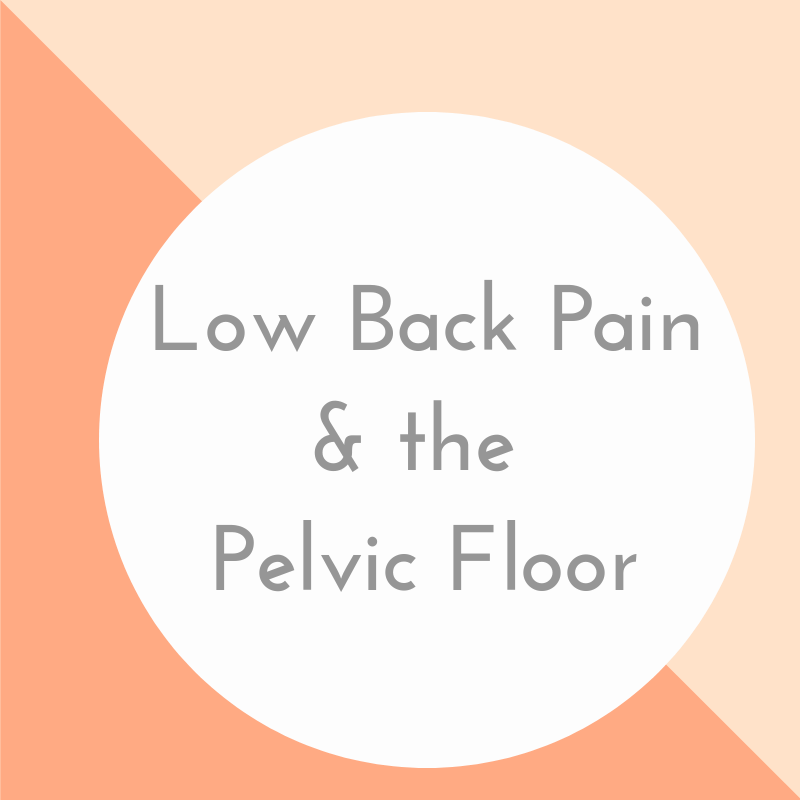Nutrition plays such an important role in our pregnancies and post-partum periods. Breastfeeding requires time…

Low Back Pain and the Pelvic Floor
You all know the song “the hip bone is connected to the thigh bone” …Right? Seems correct. But in the world of heath care often patients are examined in a box. The specialist is only able to examine the single area of expertise (the hip or the spine or the shoulder…). The problem is we are finding that there is a large overlap within the body (duh, the hip bone really is connected to the pelvis and spine). One recent study examined women with low back pain and found that 95% self-report pelvic floor dysfunction (PFD) (Vandyke et al.). On exam, 100% of these women who self-reported PFD had pelvic floor dysfunction on exam. Among those, 71% of these had increased muscle tone, meaning the muscles were not able to relax completely.
Why is this important? Well, when you are referred to a PT for Low Back Pain their primary modality is core strengthening. If you have overactive pelvic floor muscles, core strengthening isn’t going to help you reduce your back pain or get stronger. It will only increase the tone and likely the pain. This leaves both the patient and therapist frustrated by lack of progress. So how can we change this?
For starters, healthcare providers need to be educated to screen for possible pelvic floor dysfunction. As the study referenced above shows, the frequency of PFD in women with LBP is very high. Physical Therapists, Primary care providers, Orthopedic physicians should use screening tools to determine if the patient has PFD and refer them to a care provider who is skilled in treating both the back and pelvic floor.
Some simple questions can include:
- Do you leak urine with activity, cough, sneeze or laughing?
- Do you have a weak or hesitant stream of urine?
- Do you leak urine with a strong urge to go?
- Do you have pain with well woman exams, tampon use or intercourse?
- Do you have pain with bowel movements?
- Do you strain to empty your bladder or bowels?
Answering yes to any of these is an indicator that the pelvic floor maybe a part of the problem.
Pelvic Floor therapists need to look at the whole person, not just the vagina! Oh yes, I am looking to both sides of this issue, not just pointing a finger at my ortho friends. If you are treating pelvic floor and you’re only examining the patient vaginally and/or with biofeedback you are missing 97% of the dysfunction that is likely contributing to the pelvic, hip or back symptoms. Build your ortho skills, take more education classes look beyond the vagina and help these people.
Patients – don’t be shy about sharing your pelvic symptoms with providers. You too have some responsibility in this! If you have back pain and you also leak urine, tell someone! If you have back pain and have pain with gynecological exams or intercourse, tell someone! Not only the low back, but hip, shoulder, knee whatever, remember it’s all connected!!!
It might be embarrassing, but if you don’t share it, you won’t find the right provider who can help you successfully treat the back as well as the pelvic floor. In 18 years of being a pelvic floor physical therapist AND orthopedic physical therapist, I have always taken time to examine the whole body. I have spent the last 6 years building a practice, educating my practitioners to do the same. I lecture at the local universities to PT students and physicians alike to learn to screen for these symptoms so that patients can get help from the best provider for their condition.
Together we can really help our patients, but if we continue to keep ourselves in our specialty boxes and don’t look beyond, we miss quite a bit along the way and our patients are the ones who suffer for it.




